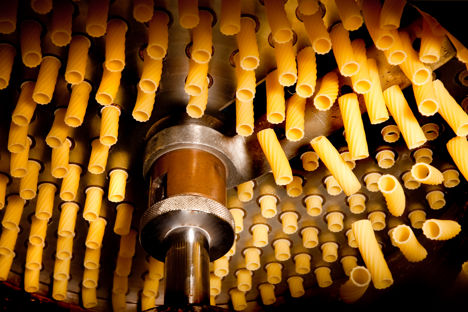
How pasta took over the world
From the dining tables of Italian royalty to becoming a weekly staple in countries all over the world, pasta has been on a serious journey. Take a look at how it’s changed and transformed over the centuries.
How pasta took over the world
From the dining tables of Italian royalty to becoming a weekly staple in countries all over the world, pasta has been on a serious journey. Take a look at how it’s changed and transformed over the centuries.
Ever since the ancient Etruscans combined cereals and grains with water to form a paste before cooking it, some form of rudimentary pasta has existed. But identifying the origin of what we know as pasta today is a bit trickier. As with anything so old, the food’s history is shrouded in myth and legend. One of the most commonly told – but wholly inaccurate – stories is that Italians had never come across pasta until Marco Polo brought it back after an expedition to China in 1295. In fact, he only made a passing comment about seeing noodles in the country, which suggests he was quite used to seeing something similar back home.
There are lots of references to pasta – in some form or another – throughout Italian history, but historians still struggle to agree on a specific timeline. It was called laganas in ancient Rome and came in wide, flat sheets, and there are references to a pasta-like dish called maccheroni in the twelfth century. Others look to Greece as the birthplace of pasta, noting that Naples was a Greek colony in the past which could explain how it took hold in Italy. In the 1400s all pasta was known as lasagna, but centuries later pasta producers were referred to as vermicellai. There was also something called fidelli, which was a sort of precursor to spaghetti.
While the origins of pasta are a little murky (almost all the theories are disputed), by the time we get to seventeenth century Italy, things get a little clearer. Naples became the epicentre for pasta production, using the unique dry and warm climate around the town of Gragnano to naturally dry pasta in sheets. The locals couldn’t get enough of it, and while only the very wealthy could afford to serve it with extravagant sauces, the general public treated it as a sort of street food, dressing it with small amounts of olive oil and cheese to be eaten by hand.
The pasta boom
As demand grew in Naples, so did the technological advancements; instead of kneading the firm dough by hand, machines started doing all the hard work, while new pasta presses were able to create certain shapes en masse. The first pasta factories began appearing in the eighteenth century, with Naples acting as the pasta capital of Italy thanks to its 280 pasta shops. At this point, the pasta being produced was still quite different to what we know today, being much rougher and less uniform than what we can create now. But when the Marsellais Purifier was invented in the 1870s it became easier to process semolina (which was traditionally done by hand using sieves) and modern-day pasta was born. Hydraulic presses, steam-powered mills and bronze dies soon followed, making pasta a truly industrious food.
Thanks to the speedy, low-cost production of pasta, it began to spread out of Naples and into the rest of Italy. Many pasta producers were perfectly content selling fresh and naturally dried pasta to locals but eventually production started growing. By 1910 artificially drying pasta had become commonplace, which meant exporting it was much easier than before.
New markets
By the early twentieth century, pasta had secured itself as one of the great cornerstones of Italian cuisine. Elaborate shapes were being created in factories; new machines were able to mix, knead and press dough faster than ever before and demand began growing abroad. The US became the biggest market outside Italy, and other European countries began to catch on to this simple yet delicious dried foodstuff that would keep for a long time.
The explosion of pasta production in the 1900s happened in just a few decades, taking pasta from a well-loved Italian staple to a global phenomenon. Today, pasta factories can be found on every continent, and while Italy still eats more pasta per person than anyone else (a whopping 25.3kg every year), it’s a firm favourite in far-flung places like Venezuela (12.2kg), Iran (8.5kg) and Peru (8.2kg).
Of course, the pasta story isn’t yet complete. Even today we can see new changes occurring, with gluten-free varieties making use of cereals and grains other than durum wheat. And because dried pasta is vegan and comes in whole wheat varieties, it appeals to the health conscious – something that other traditional foods can struggle with. Companies are even experimenting with 3D-printed pasta, creating intricate new shapes that hold more sauce and create more interesting textures than ever before. It’s certainly come a long way from its ancient, mysterious origins, and it’s highly likely it’ll be around for thousands of years to come.
